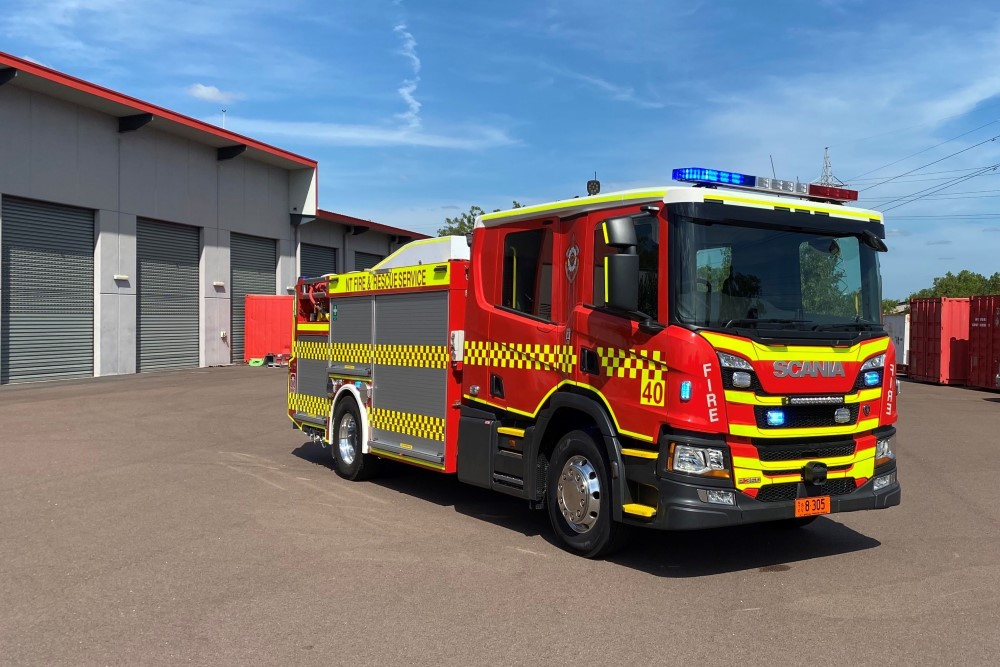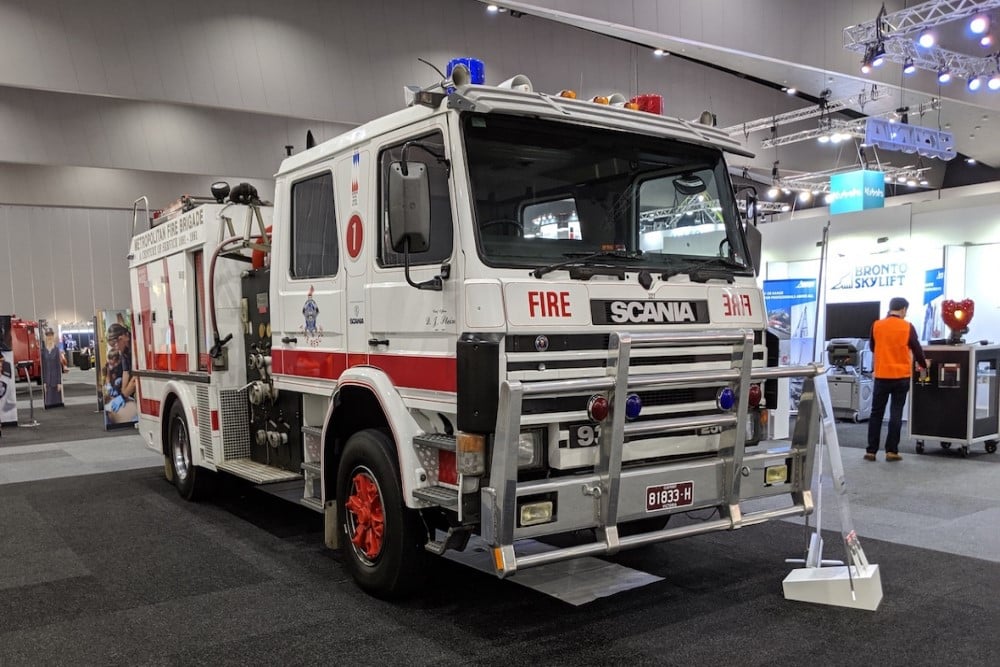
Scania Displays EV Fire Truck Alongside a 1991 Fire Fighter
SCANIA has shown a battery-electric 4x2 rigid truck in an unusual fire-fighting configuration as part of the recent 2023 AFAC Conference and Exhibition in Brisbane.
Globally, battery electric vehicles are attracting more and more attention for firefighting purposes as they are seen as having an obvious upside with their ability to do the job at the location without creating noise or emissions.
Scania Australia’s national specialised vehicle manager, Scott Slater, said there are more than 700 Scania-based fire appliances in service in Australian fire-fighting services.
“The AFAC event gives us the opportunity to present our view of the near future, with the first Scania-based battery electric rigid truck that could easily be utilised for rescue services,” he said.
“The Scania 25 P BEV on display at AFAC could be configured as a 4x2, 6x2 or 6x4 rigid chassis that is built on the P-series regular cab chassis.
“Alternatively it could be built on a Scania L-series low cab chassis, complete with an inward-opening glass ‘city door’ that makes entry and egress easier especially when wearing protective equipment.”
The Scania L-series BEV solution also offers a 6x2/4 axle configuration (the third axle is an electrically-steered tag axle), and a wheelbase of 4250mm, with a GVM of up to 28 tonnes.
With nine batteries, and 300kWh of installed energy, the BEV offers a range of up to 250km from the 230kW electric motor.
Scania’s BEV chassis can also be adapted with a rescue body or become a command centre.
Because fire appliances spend the majority of their time at the fire station, maintaining a full charge would be no problem, and the vehicle itself could be used to provide onsite power for fire-fighting or support tools during a rescue event, such as a road accident or search and rescue deployment.

Scania displayed the BEV truck at the AFAC event along with the 3-series fire truck from the recent past, now retired and loaned by the Melbourne Metropolitan Fire Brigade’s museum.
The 2-series and 3-series vehicles, in particular, became the workhorse of Australia’s metro fire fighters in the 1980s and 1990s and were seamlessly succeeded by the 4-series and then the PGR series.
This unit was commissioned in the Brigade’s centenary year, 1991, coinciding with Scania’s 100th birthday.
It was the first Scania to be operated by the MFB, and was fitted with a Mills Gitsham body. It has a 3800-litres per minute Darley 3-stage pump, an on board 1300-litre water tank and 300-litre foam tank, with a 3000 l/m monitor on the roof, along with a 9 m ladder.
The truck covered 270,000 km on active service and was eventually painted red when moving from its central Melbourne Fire Station to an outer suburban location. It was restored to its original white before being decommissioned in 2009 and presented to the Fire Services of Victoria Museum.
In 2016-17, Scania assisted in the further restoration of this and two other historic firefighting appliances, bringing them back to roadworthy condition.
“Scania drives the first response fleets of most Australian metropolitan and outer urban fire and rescue services, and has done so for a long while,” said Scania’s director of sales, Benjamin Nye.
The brand said it has an unmatched commitment to crew safety with its trucks fitted with four side-curtain rollover protection airbags as standard in the current Scania NTG and SUPER rigid CrewCab fire-fighting appliances.
Scania’s CrewCab is the only vehicle equipped with this unique – and award-winning – rollover side curtain airbag system that it introduced in 2016.
Its inclusion was seen as mitigating one of the most critical consequences of rollover accidents, where drivers or passengers are injured or even fatally crushed by their own vehicle. This clever solution deploys and protects seat-belted occupants if the truck happens to roll over.
View Recently Financed Trucks by Credit One.
Commercial vehicles are a serious investment, and getting truck finance right matters when your livelihood depends on keeping vehicles on the road. Credit One specializes in transport operators and understands what you're dealing with. As Australia's best-reviewed finance broker with 3,000+ Google reviews from operators nationwide, they've proven the approach works. Check out Credit One reviews to see for yourself, then use the loan repayment calculator to understand your options.